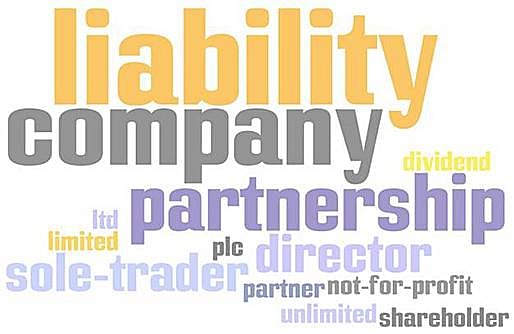

so, one of the questions asked recently was about which type of legal structure someone starting a firm may want to use. to put in the usual disclaimer - i'm neither a lawyer nor a tax expert so you'll need to take anything i saw with a mountain of salt - i'll just offer some thoughts we went through and give you a few good resources to look at.
there are 3 basic categories in terms of how the irs categorizes companies and essentially the decision we had to make was which one. the types and basic characteristics are:
simple companies (sole proprietorship and partnerships) - these are the simplest to set up, require minimal paperwork, but be forewarned: you as an individual are no different than the business. you're not a formal corporation and have significantly less liability protections. tax wise, the companies profits/losses are recorded as regular income. you'll file it on a schedule C with your taxes.
limited liability/pass through corporations (s-corporation) - at the state level, there are tons of these type companies which have sprung up in the past 30+ years. basically, they combine the pass-through income structure of a simple business with the liability protections of a formal corporation. be forewarned though: the irs does NOT have a category for LLC/LLP or other "limited liability" entities and when you register the company with them, you'll have to elect whether, for tax purposes, you want to be treated as a partnership or a S-corp. and those two are very, very different. this kind of vehicle, though, bypasses being taxed twice (once at the corporate rate and again on the personal income), which has made it so popular with small businesses. in addition, the paperwork requirements are much lighter than a C-corp. however, the legal differences between an LLC (limited liability company) and S-corp are subtle but important. an LLC has 'members', which are the owners by default. an S-corp has 'shareholders' and has officers which hold the shares. you can proportion these in all sorts of ways, but, for example, you can't do a share distribution with an LLC - any 'distribution' is subject to different withholding requirements and has a different tax assigned to it.
full corporations (c-corporation). - most popular with large firms - if you plan to grow the next gensler, you may want to start out as a C-corp. see the description above, though for the caveats in doing so. you'll have to file more paperwork (you have to have a board of directors, which meets once a quarter and files reports, even if you're not listed on an exchange, for example). you'll also be taxed differently. most of the advice we received was: look, if you grow to that size, you can make the switch to a C-corp at that time. otherwise, it's overkill for most professional service firms.
so, in my next post, i'll lay out why we've gone the way we have, what kind of headaches it's brought and how it's definitely helped overall. i'll throw in the resources as well.
Central to the blog is a long running interest in how we construct practices that enable and promote the kind of work we are all most interested in. From how firms are run, structured, and constructed, the main focus will be on exploring, expanding and demystifying how firms operate. I’ll be interviewing different practices – from startups to nationally recognized firms, bringing to print at least one a month. Our focus will be connecting Archinect readers with the business of practice.
No Comments
Block this user
Are you sure you want to block this user and hide all related comments throughout the site?
Archinect
This is your first comment on Archinect. Your comment will be visible once approved.